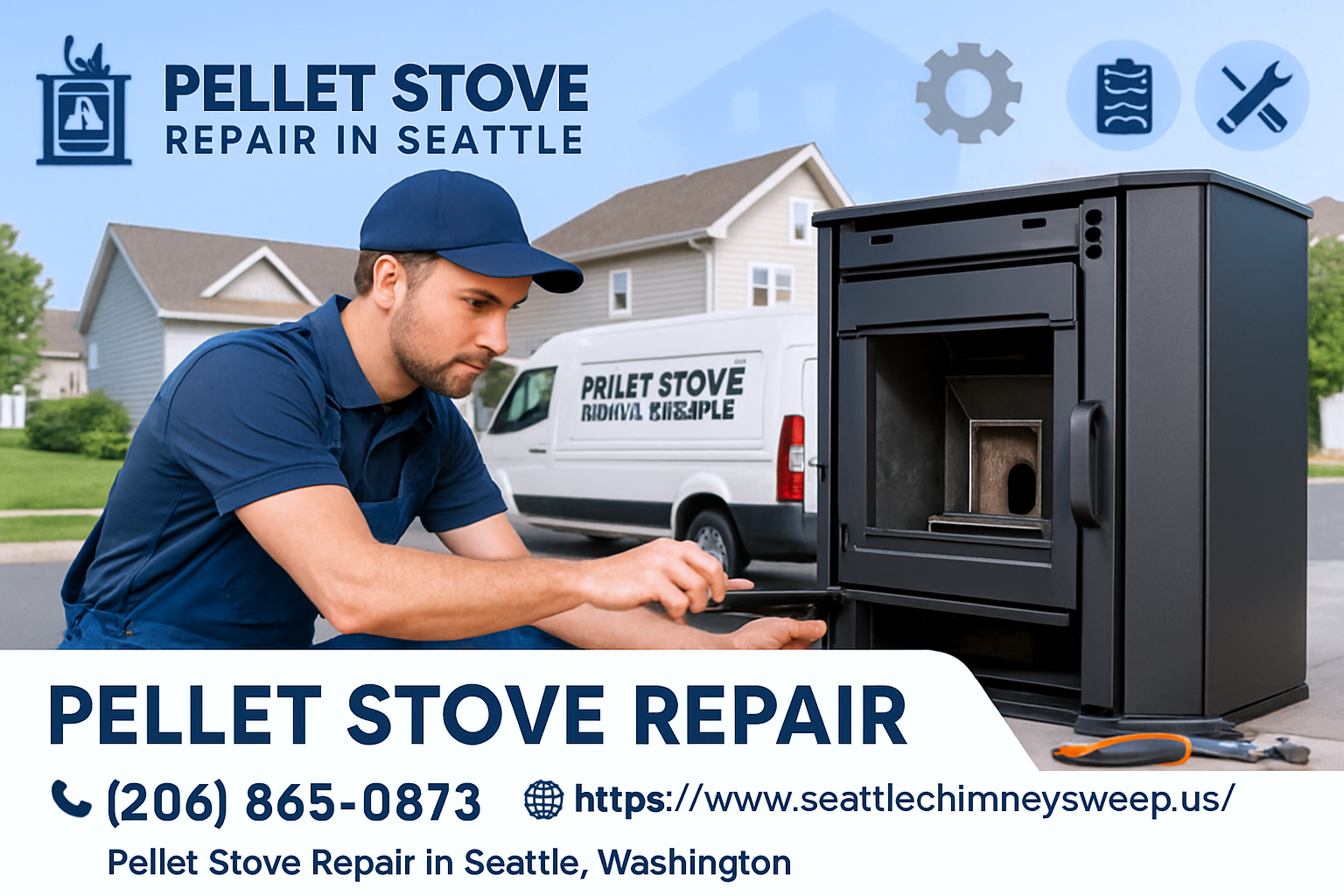There’s nothing like the cozy, comforting heat of a pellet stove when winter’s chill starts creeping in. It’s one of those little joys that makes the cold season bearable until your stove suddenly refuses to start, or starts acting up at the worst possible time (like during a snowstorm). If you rely on a pellet stove for your winter warmth, it’s smart to get ahead of the common issues that come with cold-weather use. Whether you’re new to owning one or have been through a few chilly seasons, this guide will walk you through the problems you’re most likely to face and how to avoid them like a pro. And if you’re ever stuck searching Pellet Stove Repair in Seattle, you’re not alone.
1. Problem: Stove Won’t Start on Cold Mornings
Let’s be honest waking up to a freezing living room because your pellet stove won’t start is no one’s idea of a good time.
Possible Causes:
- Faulty or dirty igniter
- Excess ash in the burn pot
- Poor pellet quality (cheap pellets can create clogs)
- Moisture in the pellets
Prevention Tips:
- Clean the burn pot regularly—every few days if you’re running it daily.
- Test your igniter before winter hits. If it’s slow or weak, consider replacing it.
- Store your pellets indoors in a dry, sealed container.
- Use premium pellets during the coldest months—they burn hotter and cleaner.
“The number one issue we see in winter is people using damp pellets,” says Mark R., a Seattle-based stove technician. “It’ll choke your stove faster than you’d expect.”
2. Problem: Excessive Smoke or Poor Venting
If your home starts to smell smoky or your stove room gets hazy, something’s off with the airflow.
What Could Be Wrong:
- A blocked or dirty chimney flue
- Ash buildup in the exhaust pipe
- A worn or broken gasket seal on the door
How to Avoid It:
- Get your chimney professionally cleaned at least once a year ideally before heavy winter use.
- Clean out your exhaust pipe monthly during winter.
- Check the door gasket for cracks or leaks and replace it if it’s worn.
If you’re Googling Chimney Cleaning Near Me In Seattle, it’s probably time for a proper sweep. That service could prevent much bigger problems (and odors) later.
3. Problem: Pellets Not Feeding Consistently
Your stove is on, but no pellets are falling into the burn pot or they come in unevenly, causing your flame to go out.
Likely Culprits:
- A jammed auger
- Low-quality pellets causing clogs
- Motor issues or wiring problems
- Hopper lid not sealed tightly
Your Fix-It Plan:
- Always clean out the hopper before each refill.
- Stick with trusted pellet brands that don’t leave behind clumps or dust.
- Double-check for pellet “bridging” (when pellets form an arch and block the auger).
- Inspect the auger motor if it’s not spinning at all.
4. Problem: Poor Heat Output
Your stove is running, but the house still feels chilly. Not cool literally.
Reasons This Happens:
- Dirty sensors or thermocouples
- Blocked air intake or poor air circulation
- Fan not running efficiently
Prevention Tips:
- Vacuum your stove’s interior weekly during peak season.
- Wipe down fans and check for dust buildup.
- Make sure the intake air vent is clear and free of obstructions.
Quick Reference Table: Problems & Fixes
| Problem | Cause | Solution |
| Stove won’t start | Dirty igniter, wet pellets | Clean burn pot, use dry premium pellets |
| Smoky room | Clogged flue or gasket leak | Chimney cleaning, replace gasket |
| Pellets not feeding | Auger jam or pellet bridging | Clear auger, use better pellets |
| Low heat output | Dirty fans, blocked airflow | Clean fans, check air intake |
| Stove shuts off randomly | Faulty sensors, ash buildup | Clean sensors, empty ash box |
A Note About Routine Maintenance
You might be surprised how much of pellet stove upkeep is just… cleaning. These systems are designed to run efficiently, but only if they’re well cared for.
Here’s a monthly winter checklist:
- ✅ Empty and clean ash pan
- ✅ Vacuum around the burn pot and sensors
- ✅ Wipe glass (so you can enjoy the flame)
- ✅ Inspect gaskets and doors
- ✅ Clean exhaust vent or chimney
- ✅ Check hopper for moisture or debris
Doing just those simple things can help your stove last longer and run smoother. Plus, it beats paying for emergency repairs when it’s freezing outside.
One Small Tip That Goes a Long Way
Get a pellet stove thermometer. It’s an inexpensive gadget that sits on your stove pipe or top and gives you instant feedback on how your stove is performing. If your temps drop too low, it’s often the first clue something’s wrong before it becomes a major issue.
Don’t Forget Your Chimney
Even if your pellet stove is direct-vented, many systems still connect to a vertical chimney or venting system that needs attention. Especially in places like Seattle, where moisture and debris can build up quickly, an uncleaned chimney can cause serious issues like:
- Backdrafting
- Carbon monoxide leaks
- Poor pellet burn
If you’re not sure where to start, searching Chimney Cleaning Near Me In Seattle will turn up local pros who can check everything out safely and thoroughly.
Conclusion: A Little Care Now = A Cozy Winter Later
Pellet stoves are fantastic winter companions when they’re working properly. But like any machine, they need a little TLC to stay in top shape. The most common problems you’ll face are usually preventable with some basic cleaning, smart pellet choices, and seasonal maintenance.By staying ahead of potential issues, you’ll save money, avoid mid-winter breakdowns, and keep your home warm when it matters most. So take an afternoon to give your stove some attention you’ll thank yourself when the next cold snap rolls in.
Read more:Chimney Sweep


